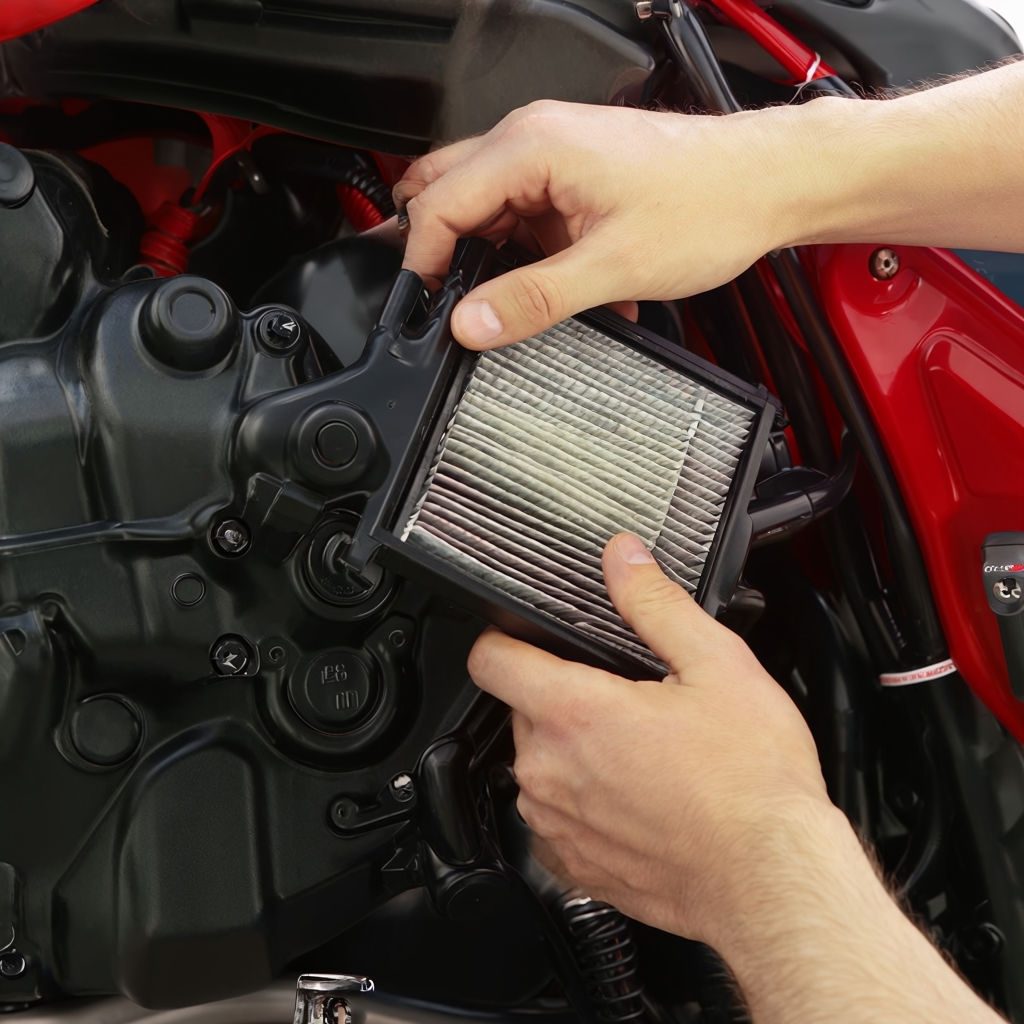
Maintaining your motorcycle doesn't have to be expensive or complicated. One of the simplest and most cost-effective tasks you can do yourself is replacing the air filter on your 2000 Honda CR250. Not only is this a straightforward process, but it can also save you about $30 compared to taking your bike to a shop.
Why the Air Filter is Important
The air filter plays a crucial role in your Honda CR250’s performance. It prevents dirt, dust, and debris from entering the engine, which could otherwise cause damage and reduce efficiency. A clean air filter ensures that the engine receives the right amount of air for combustion, which is essential for maintaining power and fuel efficiency.
Signs Your Air Filter Needs Replacement
- Reduced Engine Performance: If your bike feels sluggish or doesn’t accelerate as it used to, a dirty air filter could be to blame.
- Increased Fuel Consumption: A clogged air filter can cause the engine to work harder, leading to increased fuel consumption.
- Black Smoke from the Exhaust: This is a sign that the engine is not receiving enough air, causing it to burn more fuel than necessary.
- Visible Dirt on the Air Filter: Regularly inspecting your air filter for dirt and debris is a good practice. If you see that it’s dirty or clogged, it’s time for a replacement.
How to Replace the Air Filter on Your Honda CR250
Step 1: Gather Your Tools and Supplies
You’ll need:
- A new air filter (OEM or aftermarket, depending on your preference)
- A screwdriver or wrench (depending on the type of airbox screws your bike has)
- Air filter oil (optional, for oiled filters)
Step 2: Locate the Airbox
The air filter is located inside the airbox, which is usually found under the seat or side panels of the bike. Remove the seat or panel to access the airbox.
Step 3: Remove the Old Air Filter
- Open the airbox by removing the screws or clips that hold the cover in place.
- Carefully take out the old air filter. Be mindful not to knock any dirt into the air intake while doing so.
Step 4: Clean the Airbox (if necessary)
Before installing the new air filter, it’s a good idea to wipe down the inside of the airbox to remove any dust or debris.
Step 5: Install the New Air Filter
- Place the new air filter into the airbox, making sure it’s seated properly.
- If you’re using an oiled filter, apply air filter oil as directed before installation.
Step 6: Reassemble the Airbox
- Replace the airbox cover and secure it with the screws or clips.
- Reattach the seat or panel, and you’re done!
Cost Savings Breakdown
- DIY Air Filter Replacement: $10 to $20 for the filter
- Professional Replacement: Around $50 (including parts and labor)
- Total Savings: Approximately $30
Maintenance Tips
- Regular Inspection: Check your air filter every few rides, especially if you ride in dusty or off-road conditions.
- Replace as Needed: Generally, it’s recommended to replace the air filter every 10,000 miles or once a year, but this can vary based on riding conditions.
- Consider Reusable Filters: Some aftermarket filters are reusable and can be cleaned and re-oiled, potentially saving you even more money in the long run.
FAQ
Q: Can I clean and reuse my air filter instead of replacing it?A: It depends on the type of filter. Some filters are designed to be cleaned and reused, while others are disposable. Check your filter's specifications.
Q: How often should I replace the air filter on my 2000 Honda CR250?A: Typically, the air filter should be replaced every 10,000 miles or once a year, but more frequent replacements may be needed if you ride in dusty conditions.
Q: What happens if I don’t replace the air filter?A: A clogged air filter can lead to reduced engine performance, increased fuel consumption, and potential engine damage over time.
Q: Is it necessary to oil the air filter?A: Some air filters require oiling to function properly. If you’re using an oiled filter, follow the manufacturer’s instructions for applying the oil.

